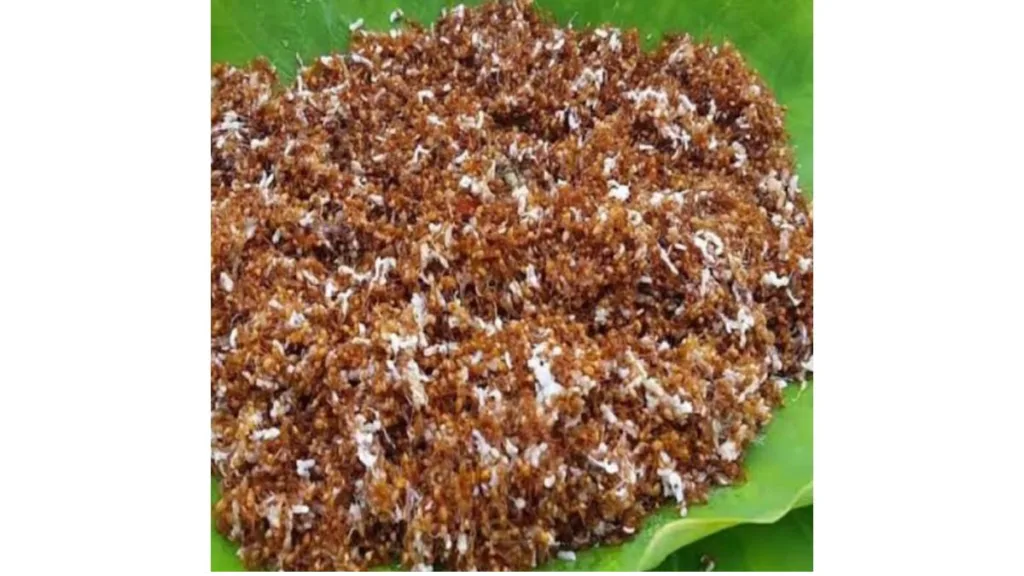7 Indigenous Products From Odisha Granted GI Tags

Bhubaneswar: The Geographical Indication Registry in Chennai has recently granted GI tags to at least seven products originating from Odisha. Among the distinctive offerings are molasses produced from date palms (Khajuri Guda), Dhenkanal Magji, Similipal Kai Chutney, Nayagarh Kanteimundi Brinjal, Kapadaganda: Dungaria Kondh Embroidery Shawl, Koraput Kalajeera Rice, and the Painting of Lanjia Saura (Idital). This addition brings the total number of Odisha’s GI-listed products to 25.
Kalajeera Rice, a unique product enlisted in the GI list, is cultivated in various areas of Koraput district, including Tolla Patraput, Pujariput, Baliguda, and Mohuli. Known for its distinct fragrance, Kalajeera rice is recommended for individuals dealing with mental health issues, as it is believed to enhance memory power, regulate diabetes, increase haemoglobin levels, and boost metabolism. The grain is also recognized for its antispasmodic, stomachic, carminative, antibacterial, astringent, and sedative properties.
The art of ‘Idital’ painting is rooted in the cultural heritage of the ‘Lanjia Saura’ tribe, classified as one of the Particularly Vulnerable Tribal Groups (PVTGs) in the Rayagada district of Odisha. Originally displayed as exterior murals on tribal homes, these paintings featured intricate white patterns against a crimson maroon backdrop. Today, the younger generation within the community has mastered the use of acrylic colors on canvas, creating stunning artworks that meet the standards of high-end home decor.

In the Mayurbhanj district of Odisha, the consumption of red weaver ants (Kai) takes a unique form in the shape of ‘Kai Chutney.’ Beyond being a culinary delight, this chutney is recognized for its medicinal properties. Packed with valuable proteins, calcium, zinc, vitamin B-12, iron, magnesium, potassium, sodium, copper, fiber, and 18 amino acids, it not only enhances the immune system but also addresses ailments such as jaundice, common cold, joint pain, cough, and poor eyesight.
The ‘Kanteimundi Brinjals’ cultivated in the Kantilo area of Nayagarh district are distinguishable by their abundant seeds and prickly thorns. Originating primarily in Badabanapur and Ratnapur, Nayagarh, this brinjal variety thrives in sandy soil, offering a unique taste among its counterparts.
Gajapati district’s ‘Odisha Khajuri Guda’ (jaggery) is a natural sweetener extracted from the sweet juice (neera) of date palm trees. Traditionally prepared in a trapezoidal form known as ‘Patali gur,’ this jaggery is organically produced, boasting a dark brown color and a distinctive taste.
‘Magji,’ a sweet crafted from buffalo milk cheese, is an exclusive delicacy of the Gondia block in the Dhenkanal district. With a history spanning over a century, this milk product has garnered praise in regional literature. Magji laddu is readily available in key markets across the district, including Bhuban, Mandar, Kashipur, Sadangi, Gondia, Bidharpur, Deogaon, and Dhenkanal town, making it a cherished treat across various parts of the state.
The Dungaria Kondh Embroidery Shawl is predominantly crafted by women from the particularly vulnerable tribal group (PVTG) residing in the Niyamgiri Hills of Rayagada and Kalahandi districts in southern Odisha. These shawls serve both as personal belongings and as gifts presented to guests, symbolizing respect and affection.
Kapdaganda, a product utilizing off-white coarse cloth as its raw material, is sourced from the Domb community through bartering harvested crops. The intricate motifs embroidered on the cloth with a needle incorporating three different colored threads: green (representing fertile mountains and hills), yellow (symbolizing auspiciousness, peace, unity, health, and happiness), and red (signifying blood, energy, power, and resilience).











